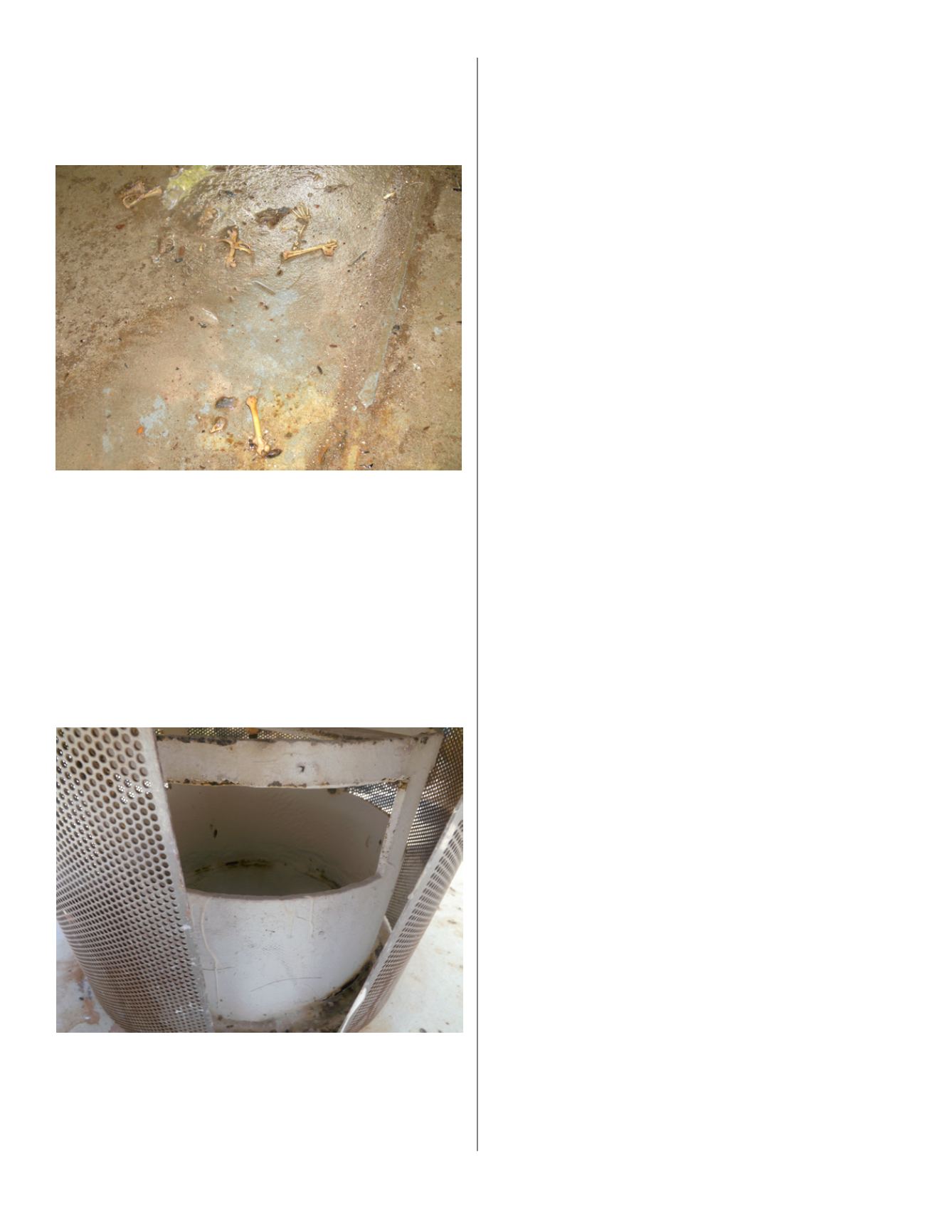
14
NCRWA.COM |
Winter 2014
Holes and gaps should be sealed or welded. Roof manways and
hatches should seal tightly and a lock should be placed on them.
Ladders should have appropriate ladder guards and locks to prevent
people from entering the tank or placing potential hosts into
the tank.
2. Clean and disinfect water tanks regularly. America Water Works
Association (AWWA) states that, “tanks should be washed out and
inspected at least once every three years, and where water supplies
have sediment problems, annual washouts are recommended.”
(AWWA M42-92)
[10]
After reading this article, biannual inspections
and cleanouts are probably more desirable. Water tanks can be taken
out-of-service and a trained professional can physically enter the
tanks to inspect and clean them, or a robotic inspection and cleanout
can be performed. A robotic inspection does not require draining
the tank and there is no downtime, liability, or water loss. Lockout/
tag out procedures and confined space permits are not needed,
because no one enters the tank. The robot is equipped with lights
and a color camera, and live viewing of the inspection takes place
through a ground monitor. A DVD of the inspection is provided and
both forms of inspections come with a written report that includes
a detailed evaluation, photographs (hopefully, none with potential
parasitic hosts), recommendations of needed repairs, code updates,
and a cost estimate for each item.
3. After an inspection has been performed and the condition of the
tank has been determined, please address the issues. If the tank
needs to be cleaned, then please clean it. If the water temperature
during the inspection indicated possible stratification, then please
take necessary steps to eliminate it. A mixing system may need to
be installed to prevent the stratified water, and the water may need
to be tested and treated more often.
Everyone deserves clean and healthy drinking water free from parasitic
worms. Please take all necessary precautions to prevent potential hosts
from getting into drinking water tanks and spreading these horrific
diseases that result from the infections. Keep in mind - this article
only discussed multi-celled parasitic worms that could potentially get
into drinking water tanks. Another list of various single-cell parasites,
viruses, and bacteria could also be lurking in drinking water tanks
waiting to attack human cells!
Erika N. Henderson has a bachelor’s degree in International Relations
from University of Southern Indiana. She has been published in
numerous water publications, and may be contacted at 270-826-
9000 ext. 228 or
to answer any questions
related to tanks.
References
[1] Poirer, Louise. “Oklahoma Town Expels Worms That Wiggled Into Water Supply”
Engineering News-Record. 16 August 2013.
/
water_dams/2013/0916-red-worms.htm
[2] “Guinea Worm Disease. “ Encyclopedia Britannica.
[3] “Parasite Facts and Figures.” Humaworm.
[4] “Ascariasis.” Human Diseases and Conditions.
[5] “Morbidity and Mortality Weekly Report”. Centers for Disease Control and Prevention.
24 May 2013.
[6] “Find the Nastiest Parasites in Humans.” Parasites in Humans.
[7] Subhash Chandra Parija, MBBS, MD, PhD, FRCPath. “Trematode Infections.”
6 August 2013.
[8] “Neurocysticercosis” American Academy of Neurology.
2013.
[9] News Reporter-Staff News Editor at Life Science Weekly. “Study Results from Baylor
University College of Medicine in the Area of Life Science Published.” NewsRX.
15 January 2013.
[10] American Water Works Association. Manual of Water Supply Practices—M42, Revised
Edition 2013. Steel Water-Storage Tanks. Chapter 8 Routine Operation and Maintenance-
Tank Washouts, 92.


